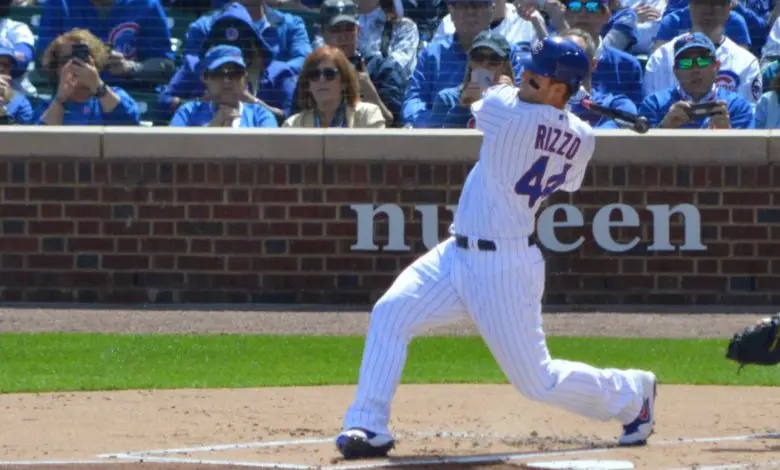
Just Getting More Consistency from Heart of Order Could Make Cubs Viable Contender
The Cubs’ overall run differential suggested that they should’ve finished 2019 with a 91-71 record, not the underwhelming 84-78 record that prompted an organizational overhaul. Explanations for their disparity between expected wins and actual wins included blown bullpen games, injuries, erratic run-scoring, and general weirdness. While all of these factors contributed to a season of reckoning, one specific hallmark was inconsistency of power production from the heart of the order.
Kris Bryant and Anthony Rizzo — two of the most valuable players in MLB over the last five years — displayed particularly uncharacteristic inconsistency in 2019. Bryant was playing the second half with a knee injury that undoubtedly hampered his performance and Rizzo was dealing with back tightness throughout the season. Absent of these injuries, the Cubs might’ve won as many games as their expected record. Before we get to what could have been and what might yet be, let’s look at what was.
We can illustrate Bryzzo’s inconsistency by counting the number of plate appearances between each homer. Then we compare the maximum number of these “no-homer stretches” versus the distribution of 1000 computer simulations representing the sluggers’ 2019 seasons. This model was created by the extremely helpful and innovative Jim Albert, whose work you can find here. Specifically, Albert’s model outputs the probability of observing a player’s maximum “no-homer stretch” relative to the computer simulation (i.e., p-value).
Below is each Cubs hitter’s probability of being “streaky,” with dots on the far left indicating a greater degree of streakiness. In the scientific field, p-values less than 0.05 are arbitrarily considered statistically significant. While no Cub was extremely streaky, Bryant and Rizzo’s results are the lowest and are therefore considered the most streaky relative to the rest of the team.

Which brings us back to the question I can’t help but ask myself: What if Bryant and Rizzo weren’t hurt throughout 2019?
Maybe Joe Maddon would still have his job. Perhaps the front office wouldn’t be tasked with resetting their luxury tax penalty status. Hell, maybe the Cubs could’ve knocked out the eventual World Series champion Washington Nationals en route to their own pennant run. I know, I know, it’s too easy to daydream the what-ifs.
Still, is it that crazy to hope for a 2020 season in which Bryant and Rizzo remain healthy and display more consistent production at the plate? That’s not out of the realm of possibility at all. Combine Bryzzo’s value with improvements in player development and maybe the 2020 outlook isn’t as bleak as it appears.
And that’s before we even consider the possibility that Willson Contreras once again plays with the incredible consistency he displayed in 2019 after coming off his worst season as a big leaguer the year prior. Just look at how much farther to the right his production is relative to the rest of the team. As currently constructed, the Cubs’ roster is projected to produce the most wins above replacement in the NL Central next season.
I know it’s also easy to look at the above graph and point the finger at Bryant and Rizzo, but please please don’t do that. Oops, looks like it’s too late for some of you. Bryant’s injury proved especially deleterious, but he showed positive adjustments to fastballs that should translate to even better results moving forward. Both stars played through pain because of a suboptimal bench and some questionable decisions by a medical and training staff that has since been overhauled.
As uncomfortable as it is to assume that the Cubs will be better next year even if they maintain the status quo, it’s not a stretch to believe health will be the biggest factor in 2020.

